
Casting : Indy Eagle
Years of Production:
1969-1971
Country of Origin:
Hong Kong
Casting Variations:
None Known
Interior Colors:
Black is common
Champagne is uncommon
White is somewhat rare and can be found in a few colors
Blue glass on all production releases
Clear glass on pre-production
Paint Colors and Variations:
| Color | Normal | White Interior |
| Aqua | Common |
Hard to Find |
| Red |
Common |
Most Common |
| Green | Common |
Hard to Find |
| Blue | Less Common |
Rare |
| Purple |
Less Common |
Rare |
| Olive | Less Common |
- |
| Orange | Less Common |
- |
| Gold Chrome |
Hard to Find |
- |
| Rose |
Hard to Find | - |
| Brown |
Hard to Find | - |
The Indy Eagle can be found with a black painted base
Discussion:
The Indy Eagle was one of four open-wheel Indy cars released in 1969 as part of the new Grand Prix Series.
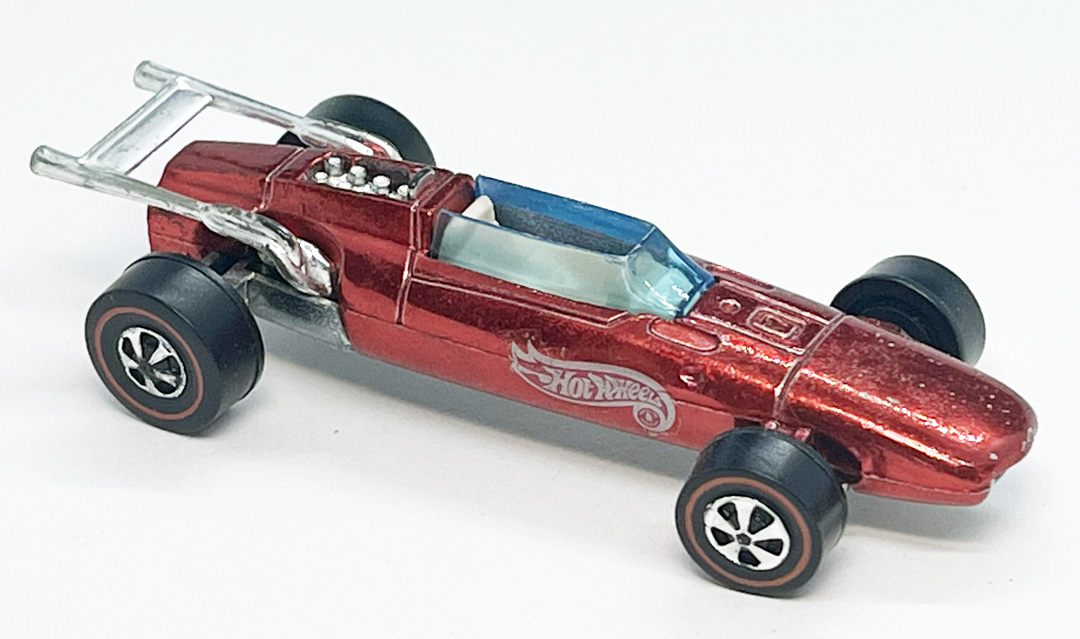
Indy Eagle
Hot Wheels Indy Eagle is a fairly accurate replica of the #48 Ford-Weslake Indy Eagle that was driven by rookie driver Jochen Rindt in the 1967 Indianapolis 500.
The Indy Eagle came in a wide range of spectraflame colors and with three different colored interiors: Black, Champagne and White. All production
pieces have blue tinted windshields. Indy Eagles are found with both bearing and capped wheels, and even sometimes even with a mixture of both.
The chromed plastic 8 cylinder engine is not removable and has a "spoiler" added between the exhausts, presumably to make the pipes less susceptible to breakage.
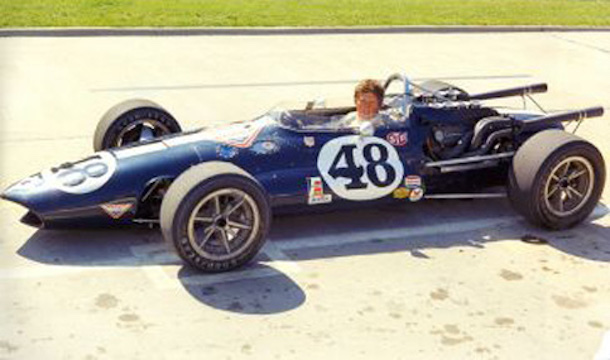
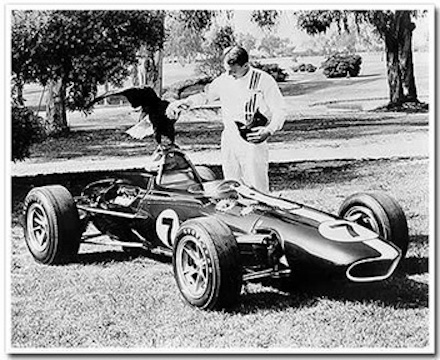
Jochen Rindt at the wheel of his 1967 Indy Eagle (L) ---- (R) Dan Gurney with a couple of Eagles, c. 1966
It is curious that the Mattel designer chose Rindt's #48 car as the model, rather than the #69 car of Denny Hulme. Hulme's Eagle finished 4th behind A.J. Foyt's
winning Ford-Coyote, while Rindt finished 24th, having retired on lap 108 with a broken valve. Indy Eagles were designed and built by All American Racing (AAR),
a company founded in 1965 by Dan Gurney and Carroll Shelby with the financial backing of the Goodyear Tire and Rubber Co.
The cars that AAR built in the mid to late '60s were characterized by a "beak" at the front of the car, hence the name "Eagle". During the late '60s, Eagles raced on both
sides of the Atlantic, with Dan Gurney driving one to victory in the 1967 Grand Prix of Belgium. Gurney's Formula 1 win was the first one by an American since 1921.
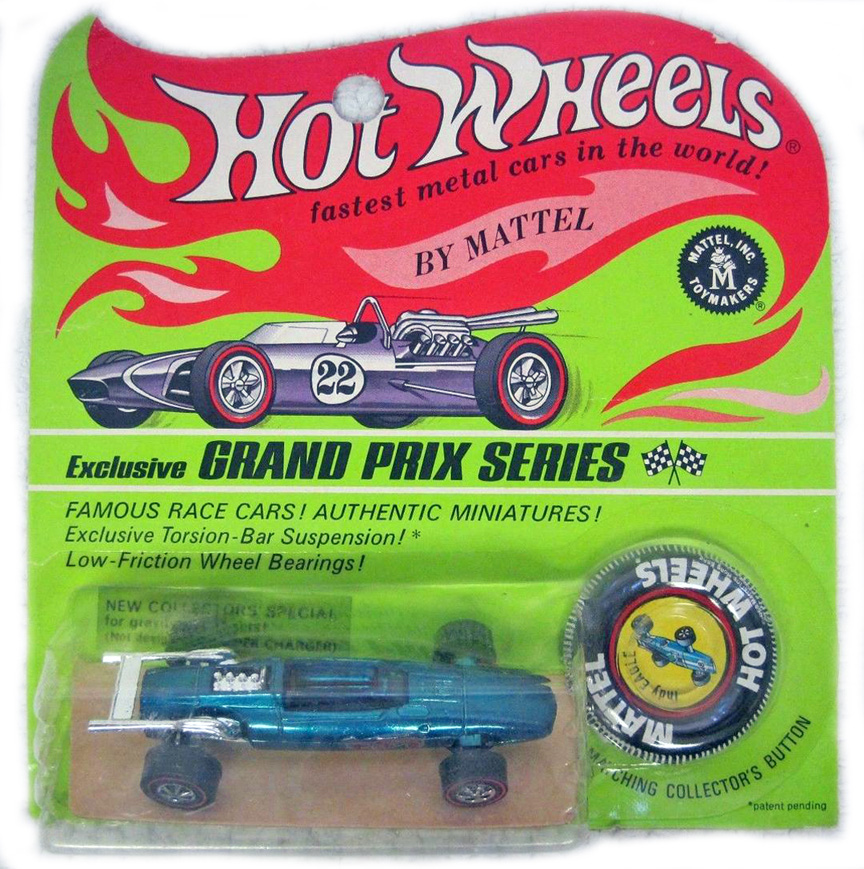
Grand Prix Blister Pack
The Eagle typically came on the "Grand Prix" card which included a metal button and the decal sheet, placed under the base card.
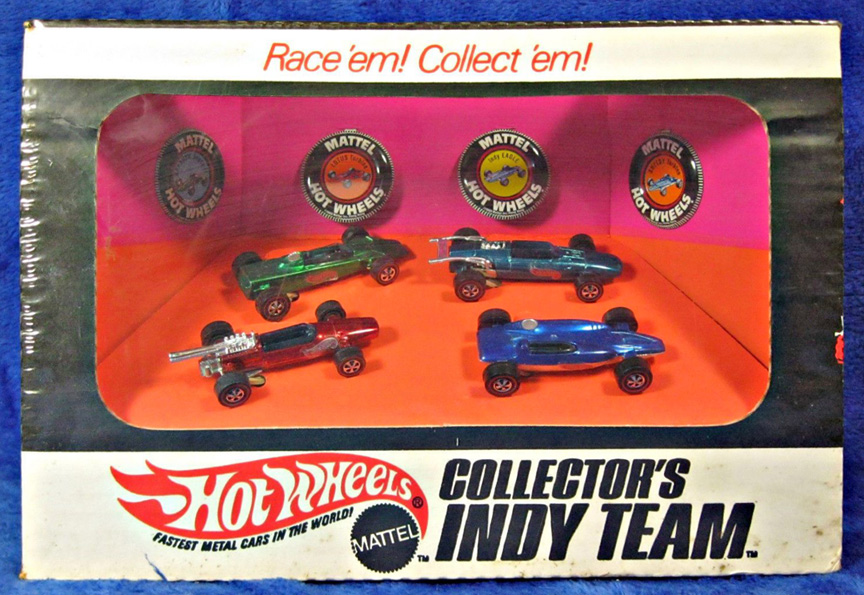
1969 "Indy Team" Four Pack
The Indy Eagle was also available in a four pack with the other three "open wheel" cars.
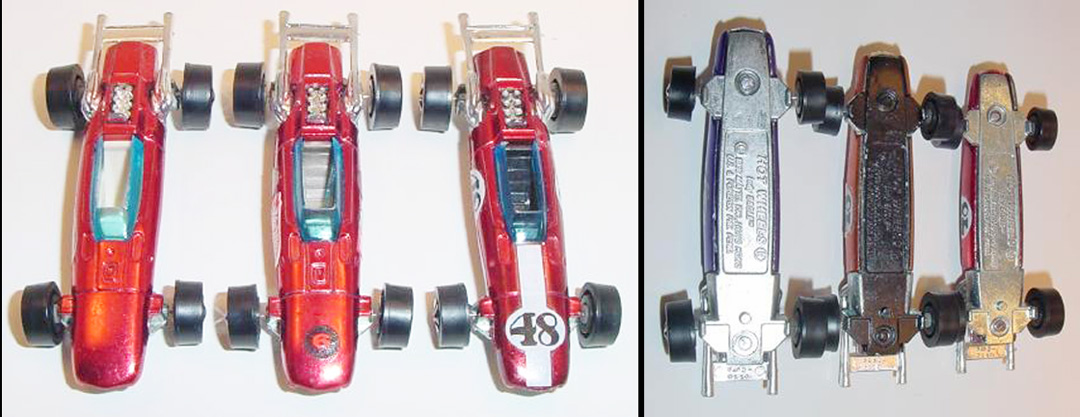
Interior and Base Variations
As for interior colors, black is by far the most common for all colors. Champagne is uncommon and may draw a premium price to collectors of the casting.
The white is hard to find except in red cars and enhances the collector value quite significantly. Only four colors sport white interiors, red, aqua, blue and purple.
The silver painted base has only been found in Europe whereas the black painted base is relatively common in the US. Both appear to be early run features.
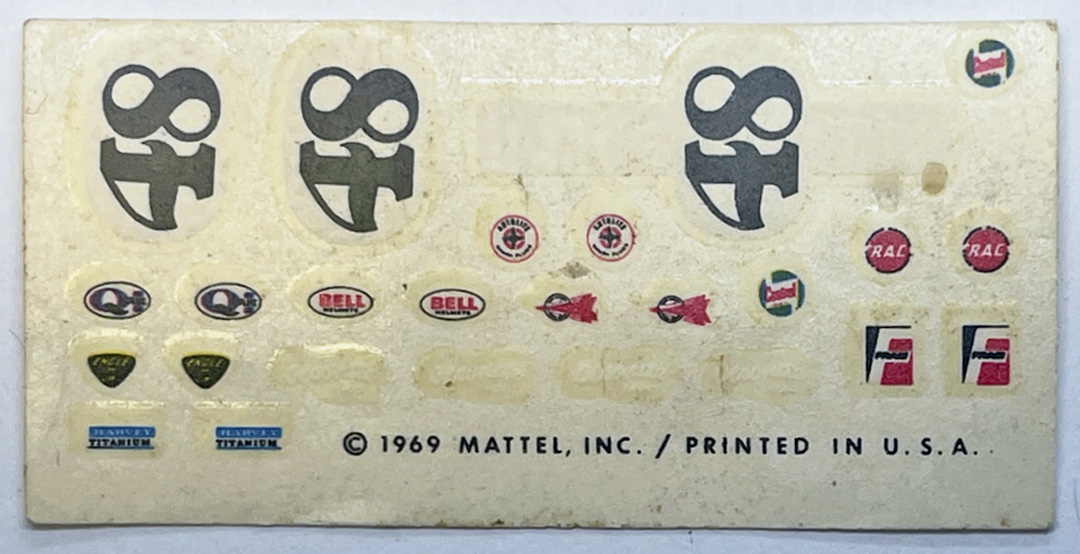
Indy Eagle Decal Sheet
All Indy Eagles came with the waterslide decals sheet for customizing the car.
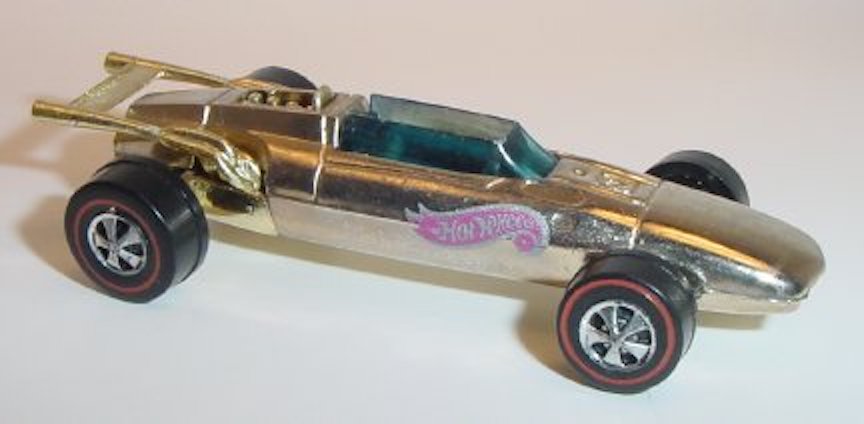
1969 Indy Eagle, Gold Chrome
The Indy Eagle in gold chrome is the only Hot Wheels car ever made in that color. It is not common but it is not rare either. It has been found in blister packs
and some speculate that it may have been considered for the 1970 "Club Car" or that it may have been made for the 1969 Toy Fair but not used in either case.
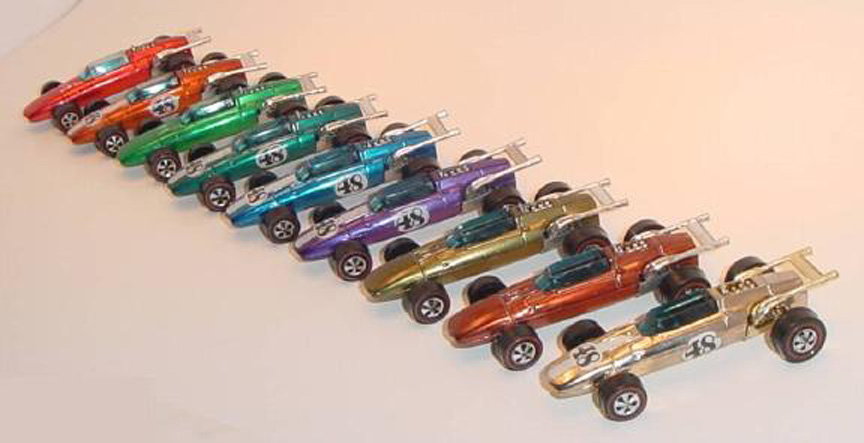
A rainbow of Indy Eagles
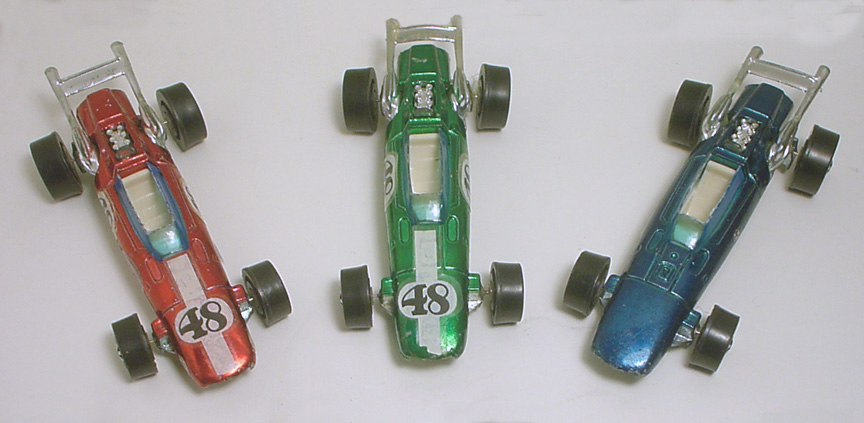
Indy Eagles with White Interior
Prototypes:
A number of preproduction pieces have survived for the Indy Eagle including diecast pieces and a resin "3 Up"" pattern piece.
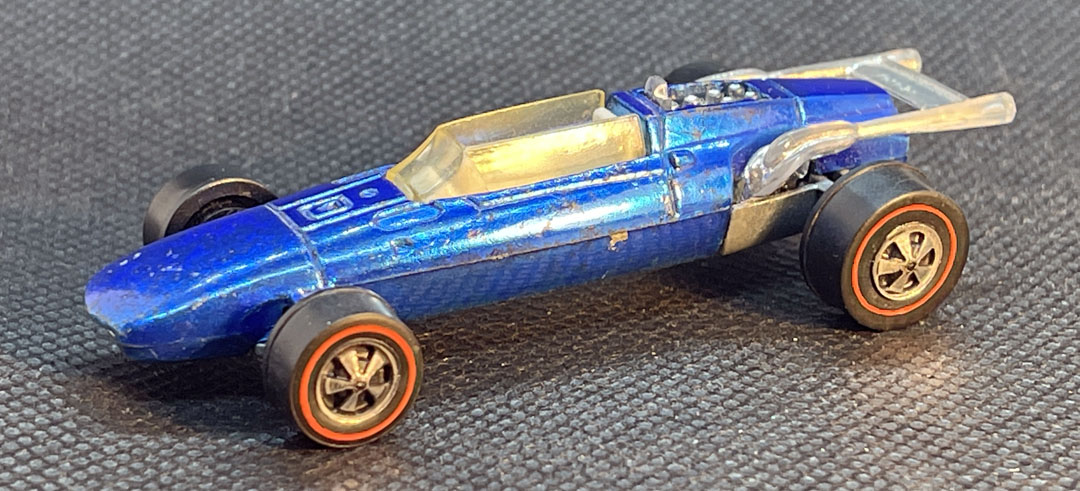
Indy Eagle prototype, Catalog Color
A few prototypes are known, the least rare being the blue spectraflame "catalog" version. Only a few prototypes in other
colors are known. The others include one in red, one in purple and one in pink. All Indy Eagle prototypes have clear windshields.
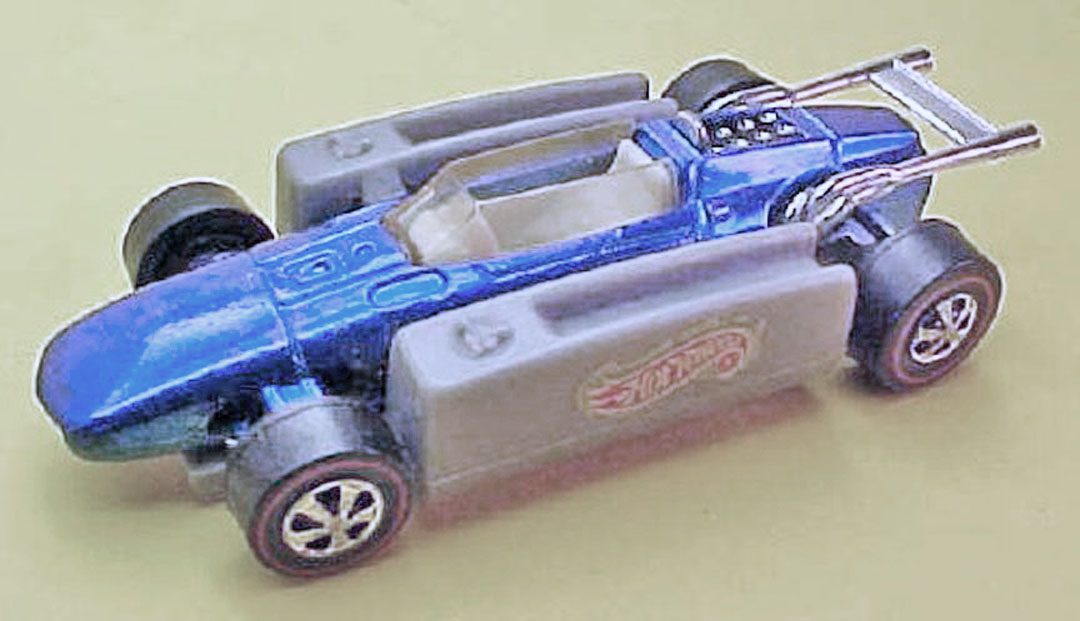
Indy Eagle with authentic tanks
Fuel tanks were developed for all four of the open wheel cars in an attempt to adapt the cars for use with
the "superchargers" however, they were never released to the public. The tanks for the Eagle are extremely rare.
Photos and information by Rick Wilson and Ted Gray
| All |
1968 |
1969 |
1970 |
1971 |
1972 |
1973 |
1974 |
1975 |
1976 |
1977 |
| Customs | |
Grand Prix | |
Heavyweights | |
Spoilers | |
Super Chromes | |
Alternate Colors | |
CIPSA | |
Home |

* DISCLAIMER *
Private use of original images is allowed.
Non-profit, non-commercial publication of original images is allowed only with prior expressed written consent from Graymatters.
For other commercial, for-profit or redistribution needs, please contact the site owner. This site is not affiliated with Mattel, Inc.
Questions? ... Send me an e-mail: tngray@nautiloid.net
© 2012 by Graymatters. All Rights Reserved.